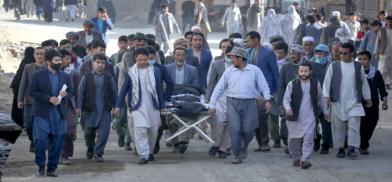Afghanistan’s Shiite Hazaras under attack as bombings claim over two dozen; question marks on Taliban control
The relative calm of the last few months had also given rise to the notion among some analysts that the Taliban might have effectively controlled the ISKP. Recent development put a question mark on it

The tentative calm of winter months, the first under the Taliban’s rule in two decades, seems to have ended this week, as a series of bombings and suicide attacks rocked several cities across Afghanistan, killing over two dozen people, mostly its ethnic minority Shia Hazara.
On Thursday, at least three attacks were reported. Over 11 people were killed when a bomb went off in a Shiite mosque in the northern city of Mazar-e-Sharif, according to local Taliban officials, reported TOLOnews. In the second attack which took place in Kunduz, another important city in the north, eleven were killed.
In the capital Kabul, a roadside bomb claimed two children in the Hazara-dominated Dasht-e-Barchi area. ISKP, the regional branch of ISIS, later claimed both attacks in the northern cities and said over 100 people were killed in these attacks.
However, real casualties are expected to be much higher, as officials from the ruling Taliban and those from hospitals gave contradictory figures. TOLOnews reported, citing eyewitnesses and local sources, that over 31 people were killed and 87 wounded alone in the Mazar-e-Sharif bombing.
The series of bombings this week further exposed the Taliban’s claim of successful operations against the ISKP sleeper cells. The relative calm of the last few months had also given rise to the notion among some analysts that the Taliban might have effectively controlled the ISKP. Recent development put a question mark on it. Apart from the ISKP, the Taliban is also being challenged by fighters of the National Resistance Front (NRF), formed by anti-Taliban leaders from the previous government, mainly Ahmad Massoud and former vice-president Amrullah Saleh, unconfirmed reports claimed.
However, the extent of the challenge that the Taliban faces, mainly in the northern provinces, remains vague due to the lack of media access and the Taliban’s undeclared censorship on attacks by NRF fighters in strategic provinces like Panjshir, Badakhshan, and Takhar.
The armed insurgency, although still in its infancy, by the Resistance Front fighters could pose a significant challenge for the Taliban, especially in the country’s northern provinces where the group doesn’t enjoy support from the local population.
(SAM)









Post a Comment